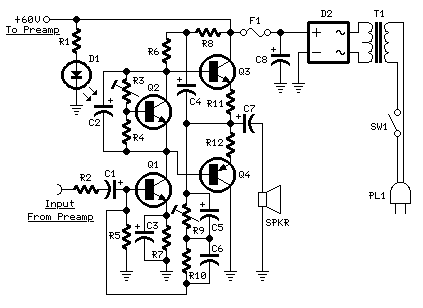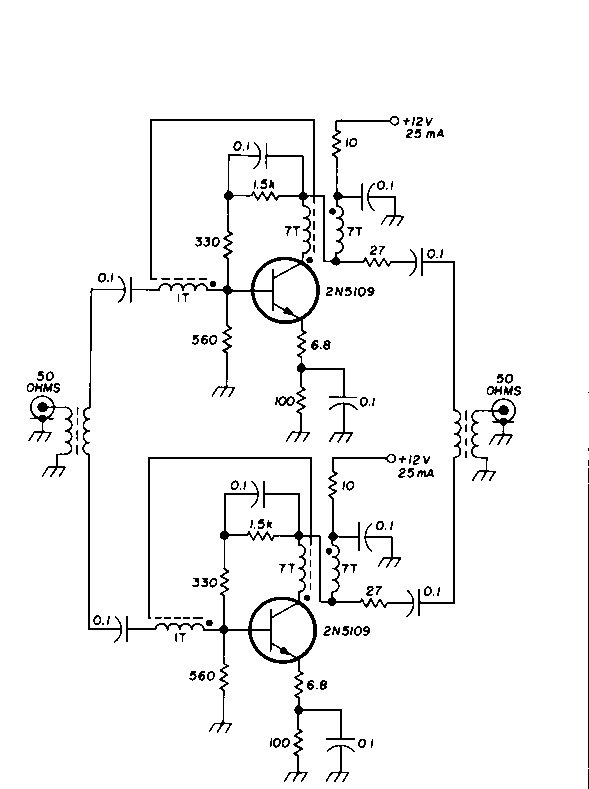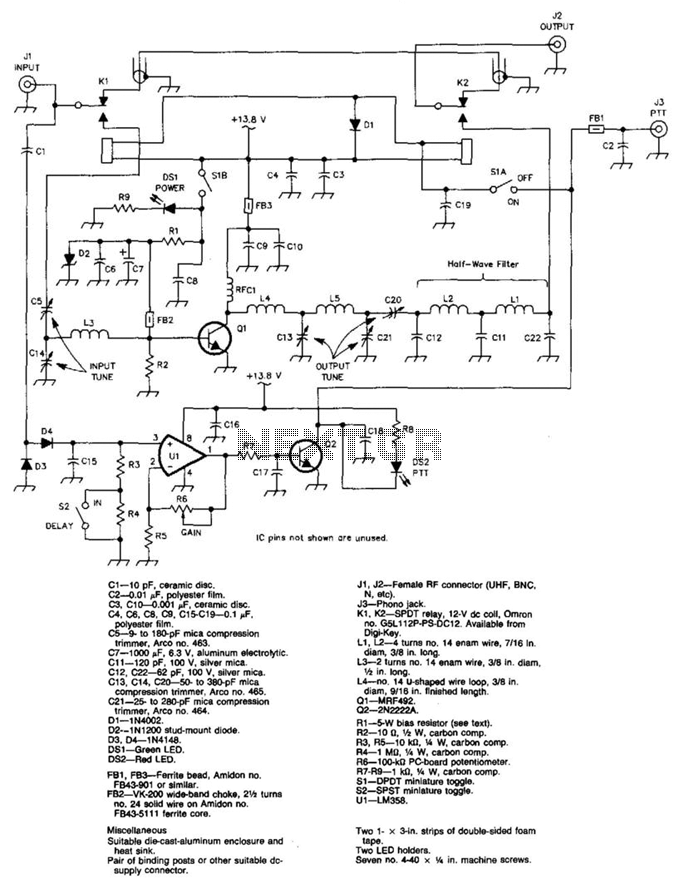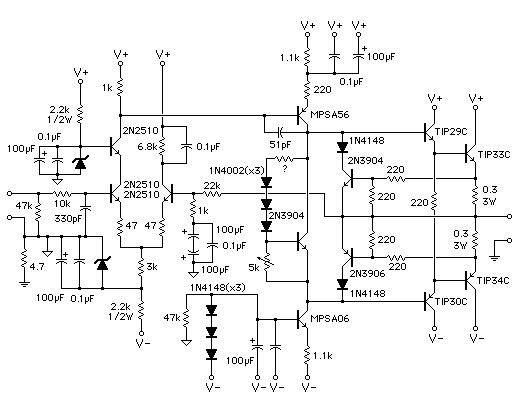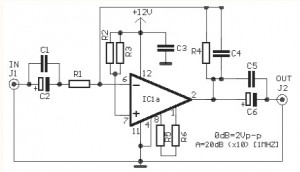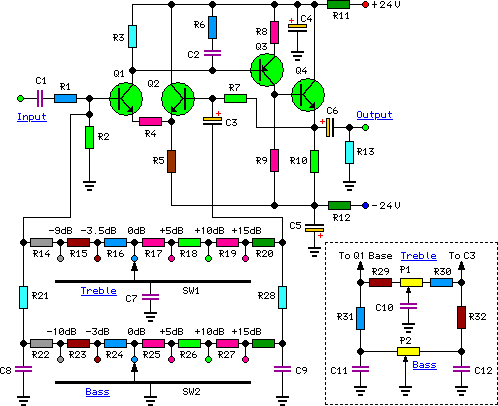
Mosfet Wideband Amplifier

For high-impedance (7,500 ohms) applications, this amplifier will provide a voltage gain of approximately -gm/ZL, where ZL is the load impedance in ohms and gm is approximately 12 x 10^-3 for the 40673 FET. The G2 voltage can be used to control the gain.
In high-impedance applications, the described amplifier configuration utilizes a Field Effect Transistor (FET), specifically the 40673 model, which exhibits a transconductance (gm) of approximately 12 mS (12 x 10^-3 S). The voltage gain of the amplifier is determined by the relationship between the transconductance and the load impedance (ZL). The formula -gm/ZL indicates that as the load impedance increases, the voltage gain becomes more negative, reflecting an inverting amplifier configuration.
The amplifier's performance can be fine-tuned through the G2 voltage, which serves as a control voltage for the gain. By adjusting this parameter, the user can manipulate the transconductance of the FET, thereby altering the output voltage level in response to a given input signal. This feature is particularly useful in applications requiring precise gain control, such as in instrumentation or audio amplification.
For optimal operation, it is essential to ensure that the load impedance is well-defined and that the FET operates within its specified parameters. Careful consideration of the power supply voltage and biasing conditions will also contribute to the overall performance of the amplifier circuit. The design should incorporate sufficient decoupling capacitors to minimize noise and ensure stability, particularly in high-frequency applications. For high-impedance (7 500 ) applications, this amplifier will provide a voltage gain of approximately -gm/ where ZL is the load impedance in ohms and gm is ~ 12 10~3 for the 40673 FET. The G2 voltage can be used to control the gain. 🔗 External reference
In high-impedance applications, the described amplifier configuration utilizes a Field Effect Transistor (FET), specifically the 40673 model, which exhibits a transconductance (gm) of approximately 12 mS (12 x 10^-3 S). The voltage gain of the amplifier is determined by the relationship between the transconductance and the load impedance (ZL). The formula -gm/ZL indicates that as the load impedance increases, the voltage gain becomes more negative, reflecting an inverting amplifier configuration.
The amplifier's performance can be fine-tuned through the G2 voltage, which serves as a control voltage for the gain. By adjusting this parameter, the user can manipulate the transconductance of the FET, thereby altering the output voltage level in response to a given input signal. This feature is particularly useful in applications requiring precise gain control, such as in instrumentation or audio amplification.
For optimal operation, it is essential to ensure that the load impedance is well-defined and that the FET operates within its specified parameters. Careful consideration of the power supply voltage and biasing conditions will also contribute to the overall performance of the amplifier circuit. The design should incorporate sufficient decoupling capacitors to minimize noise and ensure stability, particularly in high-frequency applications. For high-impedance (7 500 ) applications, this amplifier will provide a voltage gain of approximately -gm/ where ZL is the load impedance in ohms and gm is ~ 12 10~3 for the 40673 FET. The G2 voltage can be used to control the gain. 🔗 External reference
